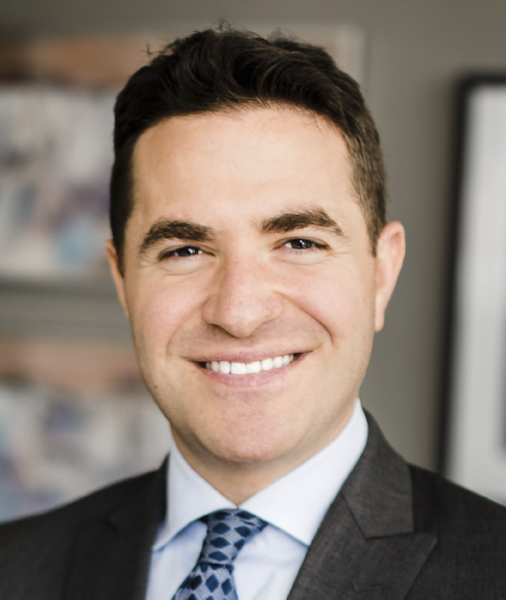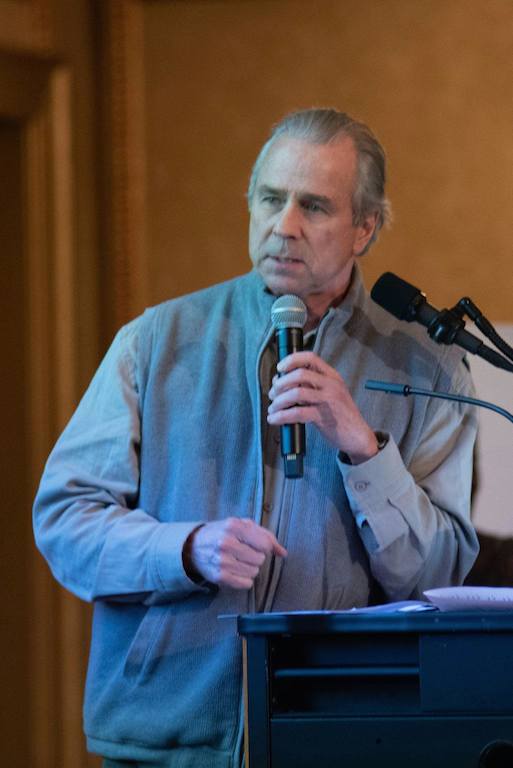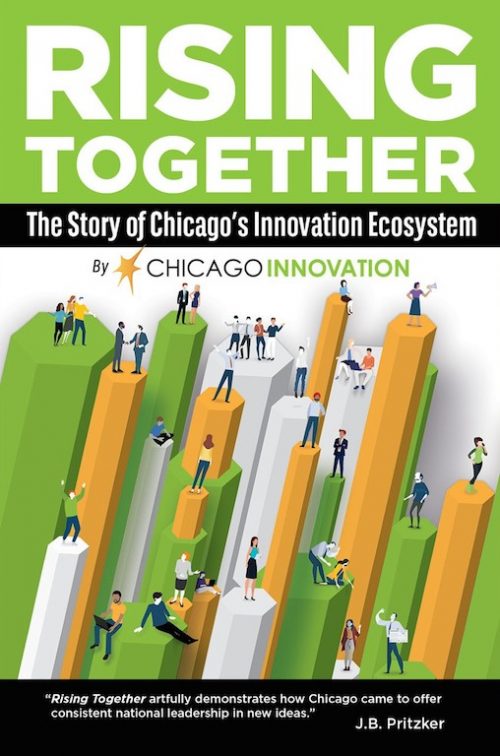
BY JUDY CARMACK BROSS
We like the way the authors of Rising Together: The Story of Chicago’s Innovation Ecosystem spell our city’s name, using it to explain why entrepreneurs thrive here. C-H-I-C-A-G-O: With City pride, Humility, Inclusion, Calculated risk-taking, Altruism, Grit and Openness standing strong for their letter of the alphabet.

Rising Together.
We recently spoke with Tom Kuczmarski, co-founder of Chicago Innovation, which produced the book. President and Founder of the global consulting firm Kuczmarski Innovation, he has been a professor at the Kellogg School of Management for 40 years, teaching his students that innovation drives economic growth.

Tom Kuczmarski.
“High tech, low tech, no tech—Chicago knows the value of collaboration,” Kuczmarski says. “In Silicon Valley they throw money at innovators. Here we work with start ups to convert them into viable entities. We teach people how to best deal with their risk aversion. We know how to connect the dots, and the last 20 years has been all about our innovators.”

Luke Tanen.

Paul Kitti.
Kuczmarski, along with authors Luke Tanen, Paul Kitti, Jacob Sherman, and Avery Stone Fish asked a diverse group of 31 founders, leaders, and change-makers to share their perspectives on how this transformation occurred.

Jake Sherman.

Avery Stone Fish.
Chicago’s ability to bounce back from physical and economic crises—from rebuilding the city’s infrastructure after the Great Fire of 1871 to creating an industrially diverse innovation ecosystem to buffer the damage from the tech bubble burst or the 2008 financial crisis—is told in terms of collaboration, entrepreneurialism, and a set of unique values to foster a community that rises above adversity and stagnation. Just like the phoenix.
Tanen explains, “Chicago has all the ingredients for people to be able to find what they need. We have the venture capitalists and angel investors, companies that work in the areas needed, universities with great talent pools and research abilities, and serial entrepreneurs who have been very successful and want to support others. You need all these pieces. Our incubators serve as a great port network for great ideas just needing to be taken to the next step.”
The book gives insights into Chicago at this crisis time: “Innovation is for everyone, and we mean everyone. All ages, cultures, races, genders need to be at the table now,” Kuczmarski says.
“Governor Pritzker, with his strong knowledge of the non-profit community and a backbone for solving social issues, really gets it,” Tanen adds. “Mayor Lightfoot has pointed our that more capital has to go into work force development for people of color. In the months and years ahead, each regional economy will need to focus on rebuilding and reinvention.”
The final chapter deals with today’s issues. They share that innovation has often been displayed as a lonely effort, with images of the rogue entrepreneur trying to bootstrap their way to realizing his or her vision, or an antisocial engineer tirelessly building prototypes in their garage. But in reality, no one goes it alone. Diversity, shared identity, collaboration, and opportunity. Could this be a cultural formula for innovation?
Rising Up paints a picture of the values that make up an innovation culture, depicts the role that an individual can play in inspiring a region-wide movement, and demonstrates how cross-industrial collaboration provides innovation that plows back into the system as a whole.
Throughout the book there are quotes from local entrepreneurs, such as financial guru Terry Savage: “A cornerstone of Chicago is its resilience. It is the cold weather in part, but Chicago people are resilient.”

Terry Savage.

Howard Tullman.
We learn that entrepreneurs start young. Howard Tullman, former CEO of 1871, Chicago’s most famous incubator, and now General Manager of G2T3V, built his own candy and magic show business at the age of 10, foreshadowing his career as one of the city’s most prolific serial entrepreneurs.
The experts were asked to share their favorite innovations, and Sandee Kastrul, President and Co-founder of T.C. Stars, came up with the most fascinating: “An abacus, the ancient calculating tool that was used before the adoption of the written numerical system is my favorite. You can really do complex math on an abacus. It is all about symbols, the placeholders and what is possible. You can make them out of cheerios with your children.”

Luke Tanen, Matt McCall, Jai Shekhawat, Andrea Zopp, Sandee Kastrul, and Tom Kuczmarski at this year’s Innovator’s Guide to Chicago.
Kuzmarski shares one of his career stories to demonstrate the practical nature of the book: “When I worked product development at Quaker Oats I had two new products. One was a frozen crepe batter, the other a crunchy nut granola bar. The crepe batter disappeared after six months, but the granola bar has been a lasting success. I always think about that, why one versus the other.”
The authors convince you that Chicago is a city of relentless renewal, perhaps like that granola. The serial innovators, such as Andrea Zopp, Howard Tullman, Sandee Kastrul, Brian Bannon, Hedy Ratner, and Linda Darragh, add great quotes to the mix.
When asked who might find this book most helpful, Kuczmarski replied, “Our audience is anyone from any business organization, non-profit or other group that really wants innovation to be a part of their culture.”
Later in August, Chicago Innovation will present on its website a virtual lending library of 200 short talks, featuring leaders in diverse fields, on different innovation themes from raising capital to cultural issues. Visit chicagoinnovation.com next month to learn more.







